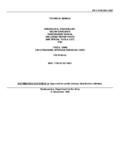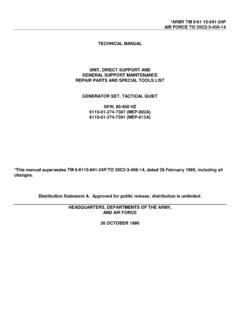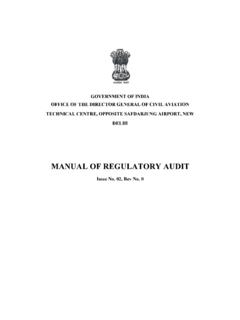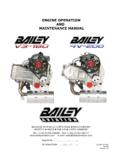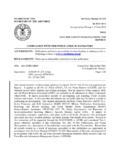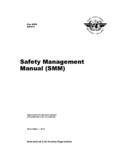Transcription of Unmanned Aircraft System Commander's Guide and …
1 TC 1-600 Unmanned Aircraft System commander S Guide AND AIRCREW TRAINING manual August 2007 DISTRIBUTION RESTRICTION: Approved for public release; distribution is unlimited. HEADQUARTERS DEPARTMENT OF THE ARMY This publication is available at Army Knowledge Online ( ) and General Dennis J. Reimer Training and Doctrine Digital Library at ( ). *TC 1-600 Training Circular Headquarters No. 1-600 Department of the Army Washington, DC, 23 August 2007 Unmanned Aircraft System commander S Guide AND AIRCREW TRAINING manual Contents Page PREFACE ..iv Chapter 1 1-1 1-1 Individual, Crew, and Collective Training .. 1-1 Individual and Collective Training Integration .. 1-2 Individual Tasks and Collective Mission-Essential 1-2 Situational Training 1-2 Battle Rostering .. 1-3 Risk 1-3 Aircrew Coordination .. 1-4 Crew Station 1-4 Symbol Usage and Word 1-4 Chapter 2 AIRCREW TRAINING 2-1 Goal and 2-1 Training 2-1 Flight Activity 2-1 commander s Evaluation.
2 2-2 Readiness Levels .. 2-3 Flying-Hour Requirements .. 2-4 Task and Iteration Proration .. 2-5 Local Area 2-5 Maintenance Operator Qualification and Training 2-6 UAS Ground Crewmember 2-7 Series Qualification Training 2-7 Distribution Restriction: Approved for public release; distribution is unlimited. *This publication supersedes TC 1-600, 23 June 2006. i Contents Task Glossary-1 References-1 Multiple Unmanned Aircraft Designation ..2-9 Chapter 3 Evaluation Grading Annual Proficiency and Readiness No-Notice Proficiency Flight PostAccident Flight Evaluation ..3-3 Crewmember Evaluation Chapter 4 CREW Elements ..4-1 Basic Qualities ..4-2 Objectives ..4-5 Standard Crew Chapter 5 INDIVIDUAL AIRCREW TRAINING Responsibilities ..5-1 DA Form DA Form DA Form DA Form DA Form DA Form DA Form DA Form Chapter 6 RISK Responsibilities.
3 6-2 Training ..6-4 Process ..6-4 Tools ..6-5 Appendix A MQ/RQ-5 ATP REQUIREMENTS .. A-1 Appendix B RQ-7 SHADOW ATP B-1 INDEX .. Index-1 TC 1-600 23 August 2007 ii Contents Figures Figure 4-1. Examples of standard words and phrases .. 4-6 Figure 5-1. Contents of an individual aircrew training 5-2 Figure 5-2. Example of a completed DA Form 5-4 Figure 5-3. Example of a completed DA Form 5-7 Figure 5-4. Example of a completed DA Form 5-10 Figure 5-5. Example of a completed DA Form 7122-R (front) .. 5-11 Figure 5-6. Example of a completed DA Form 7122-R (back).. 5-12 Figure 6-1. An example of a standard risk assessment 6-6 Figure 6-2. Probability of occurrence .. 6-7 Figure A-1. Example of a Hunter UAS mission Figure B-1. Example of a Shadow crew mission Tables Table A-1. UAC base task list ..A-2 Table A-2.
4 UAC mission task list ..A-3 Table A-3. UAC maintenance task list ..A-4 Table A-4. UAS ground crewmember task Table B-1. UAC base task list ..B-3 Table B-2. UAC mission task list ..B-4 Table B-3. UAS ground crewmember task list ..B-4 23 August 2007 TC 1-600 iii Preface This aircrew training manual (ATM) standardizes aircrew training programs (ATPs) and flight evaluation procedures by providing specific guidelines for executing Unmanned Aircraft System (UAS) aircrew training. It is based on the battle-focused training principles outlined in FM 7-1. It establishes crewmember qualification, refresher, mission, and continuation training and evaluation requirements. This manual applies to all RQ-5, MQ-5, and RQ-7 crewmembers and their commanders. This manual , in conjunction with Army regulations, will help UAS commanders, at all levels; develop a comprehensive aircrew training program.
5 By using the ATM, commanders ensure that individual and crew proficiency match their units' mission and that Unmanned Aircraft crewmembers (UACs) routinely employ standard techniques and procedures. UACs will use this manual as a "how to" source for performing crewmember duties. This manual provides performance standards and evaluation guidelines so that crewmembers know the level of performance expected. Each task has a description that describes how it should be done to meet the standard. Standardization officers, evaluators, and unit trainers will use this manual and Army Regulation (AR) 95-23 as the primary tools to assist the commander in developing and implementing this ATP. Technical Circular (TC) 1-210 does not apply to the UAS ATP. This TC applies to the Active Army, the Army National Guard (ARNG)/Army National Guard of the United States (ARNGUS), and the United States Army Reserve (USAR) unless otherwise stated.
6 The proponent of this publication is United States Army Training and Doctrine Command (TRADOC). Send comments and recommendations on Department of the Army (DA) Form 2028 (Recommended Changes to Publications and Blank Forms) through the aviation unit commander to United States Army Aviation Warfighting Center (USAAWC), Directorate of Evaluation and Standardization, ATTN: ATZQ-ES (UAS Branch), Building 4503, Kingsman Road, Fort Rucker, Alabama 36362-5263. This publication has been reviewed for operations security considerations. TC 1-600 23 August 2007 iv Chapter 1 Introduction The training objective of any combat unit is for the unit to be able to conduct combined arms training. Toward that end, effective individual and crew training programs form the foundation for an aviation unit training program. Once the unit establishes individual and crew training programs, it must integrate them into an effective collective training program.
7 As one of the Commander's primary training documents, TC 1-600 links individual and unit collective tasks. The commander also uses FM 7-0 and FM 7-1 to link the Aircraft operator's manual , ATM, and individual training program to the collective training program. RESPONSIBILITIES 1-1. commander . According to FM 7-1, the commander zIs the primary training manager and trainer for the unit. zIs responsible for the ATP. zTrains based on the unit s wartime mission, maintains standards, and evaluates proficiency. zProvides the required resources and develops and executes training plans that result in proficient individuals, leaders, and units. zHas subordinate leaders (officers and noncommissioned officers [NCOs]), instructor operators, and standardization officers/NCOs that help plan and prepare UAS training. 1-2. Standardization Officer/NCO. The UAS standardization officer is the Commander's technical advisor and helps develop, implement, and manage the ATP.
8 1-3. Evaluators/Unit Trainers. These individuals are the standardization instructor operators (SOs), instructor operators (IOs), and unit trainers (UTs) that help the commander administer the ATP. They evaluate, train, and provide technical supervision for the UAS standardization program as specified by the commander . 1-4. Mission Commanders (MCs). These individuals are responsible for coordinating all external needs as well as crew coordination. They maintain command and control over all flight operations from pre-mission through postmission, to include disseminating information. To perform duties as a MC, a crewmember must be qualified and current on the System being flown. 1-5. Unmanned Aircraft Crewmember. Operators and/or ground crewmembers perform duties controlling the flight of a UAS or the operation of its mission equipment. They also prepare, launch, recover, and/or maintain the UASs.
9 INDIVIDUAL, CREW, AND COLLECTIVE TRAINING 1-6. To design and manage an effective ATP, the commander must analyze individual, crew, and collective training. Note. This ATM describes training requirements for crewmembers. It will be used with AR 95-23 and other applicable publications. The ATM and the unit s mission-essential task list (METL) are used by the commander to combine individual training with crew training. 23 August 2007 TC 1-600 1-1 Chapter 1 1-7. Individual Training. Individual training the building block to crew training is the responsibility of the aviation platoon leader, with assistance from the unit IO. The operator's manual and the ATM Guide the platoon leader and the IO in training the individual to mission-ready standards. UACs must ensure that they satisfy all ATP requirements. 1-8. Crew Training zCrew training is the first step in developing a unit collective training plan.
10 It is the building block for team training. The platoon leader and unit IOs train the crew. The platoon leader ensures that the crew is proficient in ATM tasks and in the tactics, techniques, and procedures outlined in other appropriate publications. zThe commander , subordinate leaders, and trainers must implement the crew coordination program into crew training. Crew coordination is critical training it improves mission performance and enhances safety. To effectively employ modern Army UASs with their complex missions, more than one crewmember must perform crew tasks. 1-9. Collective Training. Collective training encompasses all training, including combined arms operations. The unit's METL links crew and collective training. These tasks are collective tasks that support the unit's wartime mission. Along with this ATM, FM 7-1 helps the commander link individual and crew training with the tasks required to execute the wartime mission.










